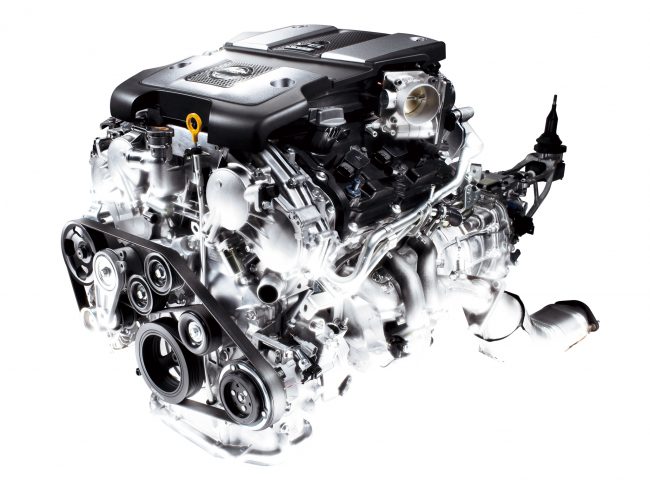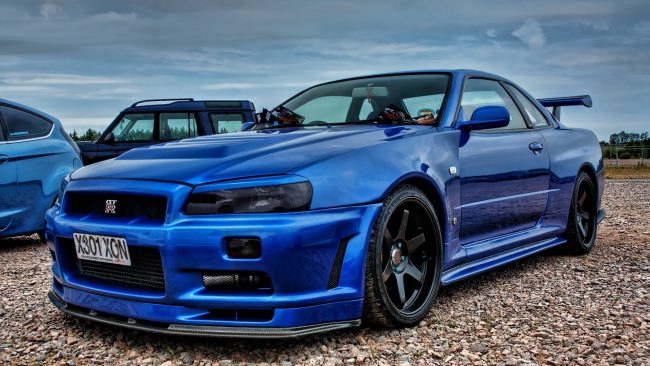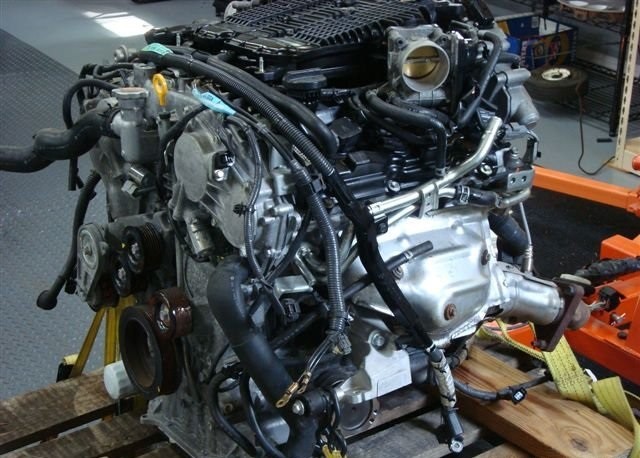
Engine Nissan VQ37VHR
Content
The Japanese company Nissan has almost a century of history, during which it has managed to establish itself as a manufacturer of high-quality, functional and reliable cars.
In addition to active design and creation of car models, the automaker is engaged in the production of their specialized components. Nissan was especially successful in the "construction" of engines; it is not without reason that many small manufacturers actively purchase units for their cars from the Japanese.
Today, our resource decided to cover a relatively young ICE manufacturer - VQ37VHR. More details about the concept of this motor, the history of its design and operation features can be found below.
A few words about the concept and the creation of the engine
 The line of motors "VQ" replaced the "VG" and is fundamentally different from the latter. The new ICEs from Nissan were designed using progressive technology and incorporated the most successful innovations of the 00s of this century.
The line of motors "VQ" replaced the "VG" and is fundamentally different from the latter. The new ICEs from Nissan were designed using progressive technology and incorporated the most successful innovations of the 00s of this century.
The VQ37VHR engine is one of the most advanced, functional and reliable representatives of the line. Its production began more than 10 years ago - in 2007, and continues to this day. VQ37VHR found recognition not only in the environment of "Nissan" models, it was also equipped with Infiniti and Mitsubishi cars.
What is the difference between the motor in question and its predecessors? First of all - an innovative approach to construction. ICE "VQ37VHR" has a unique and very successful concept, which involves:
- Its cast aluminum block construction.
- V-shaped structure with 6 cylinders and a smart gas distribution system, fuel make-up.
- Robust CPG build with a focus on functionality and power, with a 60 degree piston angle, dual camshaft operation and a range of other features (such as oversized crankshaft journals and longer connecting rods).
The VQ37VHR was based on its closest sibling, the VQ35VHR, but has been slightly enlarged and improved in terms of reliability. As more than one oscillogram and a number of other diagnostics show, the motor is the most advanced in the line and its work is almost the most balanced.
In principle, a lot can be said about the VQ37VHR. If, however, to abandon the "water" and consider the engine in essence, then it is simply impossible not to note its good functionality, a high level of reliability and power.
Nissan engineers, who pursued the goal of creating powerful internal combustion engines for representative models in the face of the entire VQ line and the VQ37VHR engine in particular, managed to achieve it. No wonder these units are still used and their popularity, demand over the years have not fallen a bit.
Technical characteristics of VQ37VHR and a list of machines equipped with it
| Manufacturer | Nissan (division - Iwaki Plant) |
|---|---|
| Motor brand | VQ37VHR |
| Years of production | 2007-NV. |
| cylinder head (cylinder head) | Aluminum |
| Food | Injector |
| Construction scheme | V-shaped (V6) |
| No. of cylinders (valves per cylinder) | 6 (4) |
| The piston stroke, mm | 86 |
| Cylinder diameter, mm | 95.5 |
| Compression ratio, bar | 11 |
| Engine displacement, cubic meters cm | 3696 |
| Power, HP | 330-355 |
| Torque, Nm | 361-365 |
| Fuel | gasoline |
| Environmental standards | EURO-4/ EURO-5 |
| Fuel consumption per 100 km of track | |
| - town | 15 |
| - track | 8.5 |
| - mixed mode | 11 |
| Oil consumption, grams per 1000 km | 500 |
| Type of lubricant used | 0W-30, 0W-40, 5W-30, 5W-40, 10W-30, 10W-40 или 15W-40 |
| Oil change frequency, km | 10 15-000 XNUMX |
| Engine resource, km | 500000 |
| Modernization options | available, potential - 450-500 hp |
| Equipped models | Nissan skyline Nissan fuga Nissan FX37 Nissan EX37 Nissan and Nismo 370Z Infiniti G37 Infiniti Q50 Infiniti Q60 Infiniti Q70 I I Mitsubishi Proudia |
Note! Nissan produced the VQ37VHR ICE in only one form - an aspirated engine with the characteristics noted above. Turbocharged samples of this motor do not exist.

Repair and service
As noted earlier, the VQ37VHR was designed around the less powerful "VQ35VHR" motor. The power of the new engine has increased slightly, but nothing has changed in terms of reliability. Of course, one cannot blame the VQ37VHR for anything, but it would be wrong to state that it does not have typical breakdowns. Similarly to the VQ35VHR, its successor has such "sores" as:
- increased oil consumption, which appears at the slightest malfunction of the internal combustion engine oil system (improper functioning of catalysts, gasket leaks, etc.);
- frequent overheating due to the relatively low quality of the radiator tanks and their contamination over time;
- unstable idling, often caused by wear on the camshafts and adjacent parts.
Repairing the VQ37VHR is not cheap, but it is not difficult in terms of organization. Of course, it’s not worth it to “self-medicate” such a complex unit, but it’s quite possible to contact Nissan’s specialized centers or any service station. With a high degree of probability, you will not be denied the repair of any malfunctions of the internal combustion engine in question.
As for tuning VQ37VHR, it is quite suitable for it. Since the manufacturer squeezed almost all the power out of his concept, the only way to increase the latter is to turbocharge. To do this, install a compressor and refine the reliability of some components (exhaust system, timing and CPG).
Naturally, you can not do without additional chip tuning. With a competent approach and a considerable infusion of funds, it is quite possible to achieve a power of 450-500 horsepower. Is it worth it or not? The question is difficult. Everyone will answer personally.
On this, the most important and interesting information on the VQ37VHR motor has come to an end. As you can see, this ICE is an example of excellent quality combined with good functionality. We hope that the material presented has helped all readers to understand the essence of the motor and the features of its operation.

